When Marc Chagall arrived in Paris in 1910, the city was experiencing one of its most thrilling periods of artistic activity. For the young Jewish artist, fresh off the train from Belarus, the French capital was intoxicating: a riot of lights, colour and shifting forms; a meeting place of ideas. It could not have been more different from the world of the Vitebsk ghetto in which he had grown up. ‘I aspired to see with my own eyes what I had heard of from so far away,’ Chagall later reminisced. ‘The sun of Art then shone only on Paris, and it seemed to me, and seems to me still, that there is no greater revolution of the eye than the one I encountered in 1910 on my arrival in Paris.’
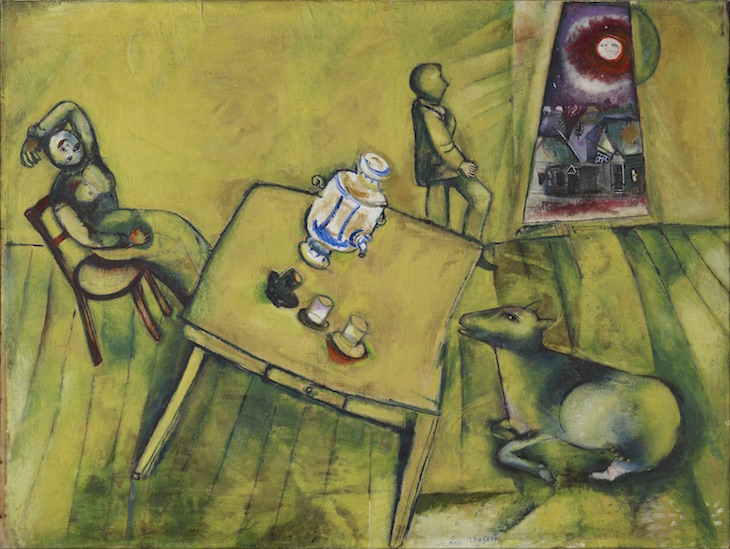
The Yellow Room (1911), Marc Chagall. Photo: Robert Bayer; © Marc Chagall, Vegap, Bilbao 2018
But the Jewish community of Vitebsk was never far from his mind. ‘In all my paintings there is not one centimetre free from nostalgia for my native land,’ Chagall said. The work he produced in Paris blended the landmarks of the industrialised metropolis with his recollections of life back home. Traditions, customs, rituals, and stories reappear time and again, endowing the city with a fairytale quality. With around 80 paintings and drawings from Chagall’s formative years, this exhibition sets out to show how the artistic foment of Paris in the 1910s – the impact of Picasso and the Fauves, the Futurist preoccupation with movement, and the post-Cubist, geometric world of colours – became fused with Chagall’s imagined scenes of unchanging, provincial life in Vitebsk.
In the first room, in Paris through the Window (1913), the Eiffel Tower looms above an anthropomorphic cat, depicted with a magic realism reminiscent of Bulgakov. A small parachutist drifts down from the sky, while a Janus-like figure turns one face towards the modern world, the other back to the shtetl. ‘I do not want to be like all the others,’ the artist announced. ‘I want to see a new world.’
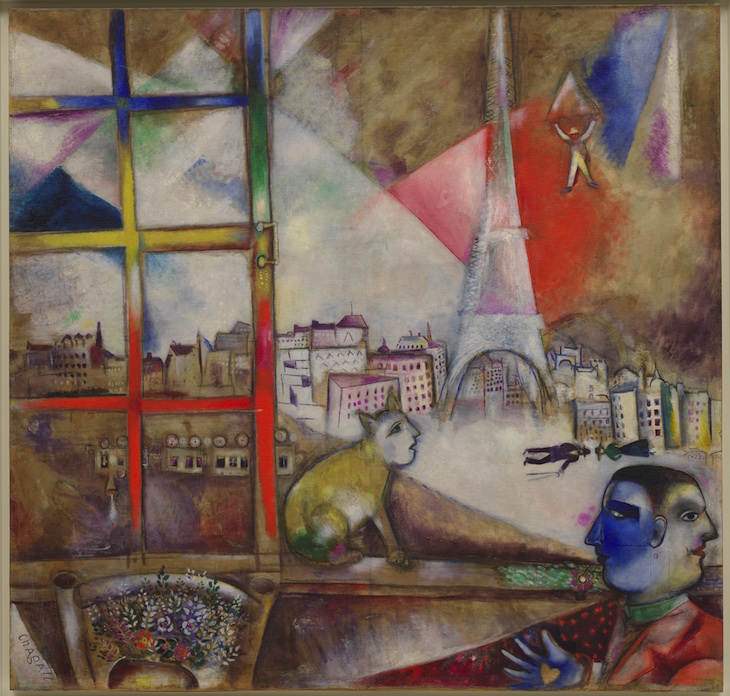
Paris through the Window (1913), Marc Chagall. © Marc Chagall, Vegap, Bilbao 2018
Chagall’s sojourn in Paris was short-lived. He returned home in 1914 for his sister’s wedding and to visit his fiancée Bella Rosenfeld, and was trapped there for eight years by the outbreak of war. Assigned to a camouflage unit in Petrograd as a clerk, he produced a huge number of paintings. Some are muted depictions of domestic life, but in others the painter pits himself against the progress of time – dwarfed by the pendulum of a giant clock, endlessly ticking his life away. Almost always he is at the window, the view and his imagination merging before the viewer. Milkmaids, rabbis and peasant farmers drift across the sky, their faces turned upside down – as though to remind you that the world Chagall had grown up in was itself being turned on its head. Even the relatively realist portraits of wise old Hebrew scholars take on a mythological air with their faces of red, green and blue. This inner world was more real to Chagall than appearances. ‘I lie between those two worlds, looking out of the window,’ he wrote.
Some of the most euphoric images from this period were inspired by Bella. The Promenade (1918) shows the gleeful artist, totally lacking in self-consciousness, a bird in one hand seemingly transferring its power of flight through his body into Bella – clasping the other hand – who soars kite-like above him. The artist and critic Alexandre Benois said of Chagall, ‘he simply loves what he sees. And this love changes everything.’
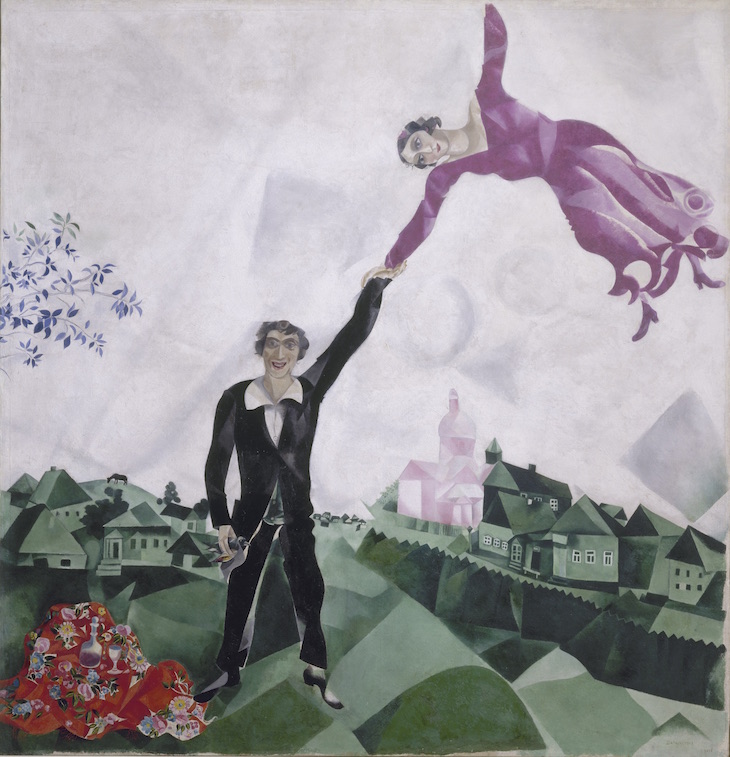
The Promenade (1917–18), Marc Chagall. © Marc Chagall, Vegap, Bilbao 2018
In Chagall’s world, the local becomes universal; the individual becomes everyman; the weightless Bella a symbol of the universality of falling in love. The motifs drawn from his memory would recur throughout his almost century-long life of painting. Picasso said of them, ‘I am not crazy about those cocks and asses, and flying violinists and all the folklore, but his canvases are really painted, not just thrown together. Some of the things he’s done…convince me that there’s never been anybody since Renoir who has the feeling for light that Chagall has.’
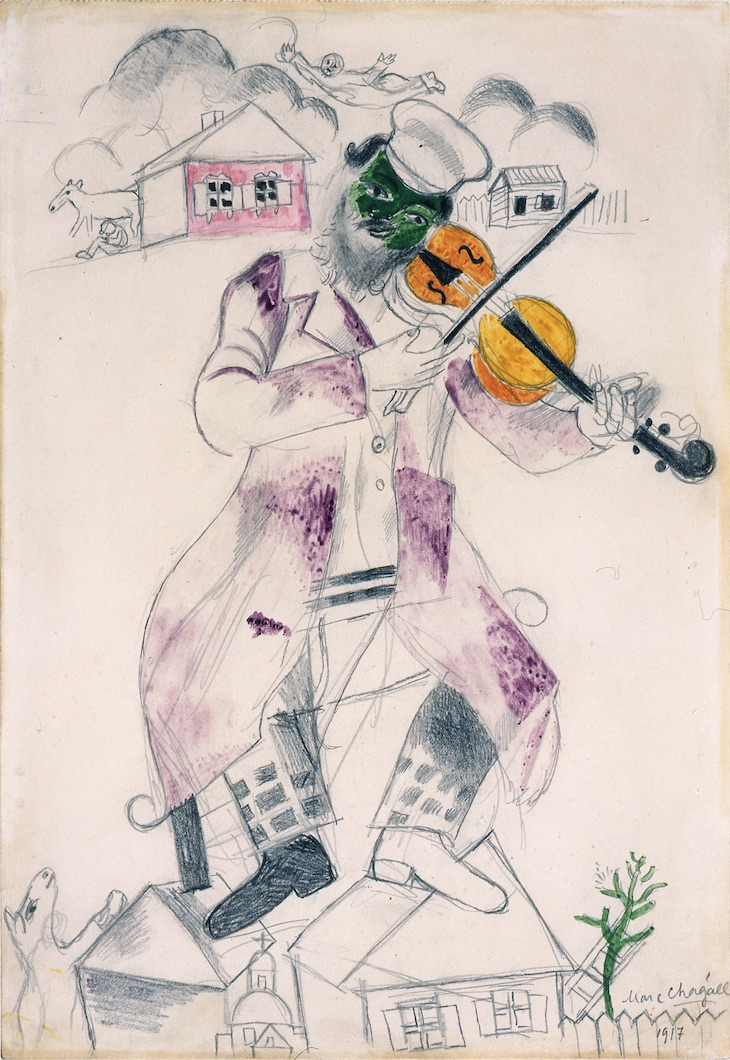
Study for Music (Fourth panel for the State Jewish Chamber Theater, Moscow) (1917), Marc Chagall. Photo © Ewald Graber; © Marc Chagall, Vegap, Bilbao 2018
This exhibition reveals where it all began. In the shifting, volatile world of the 1910s, Chagall’s understanding of his role as an artist is symbolised perfectly by those fiddlers who play out rapturously, balanced precariously atop their roofs in so many of his paintings. Like Tevye – the milkman in the musical, the title of which was inspired by the artist’s imagery – Chagall is brought face-to-face with modernity. Unlike Tevye, however, Chagall is not here to argue with God over his people’s fate. Instead, he is joyfully flying with them toward a brave new world.
‘Chagall: The Breakthrough Years, 1911–1919’ is at the Guggenheim Bilbao, until 2 September 2018.
Unlimited access from just $16 every 3 months
Subscribe to get unlimited and exclusive access to the top art stories, interviews and exhibition reviews.

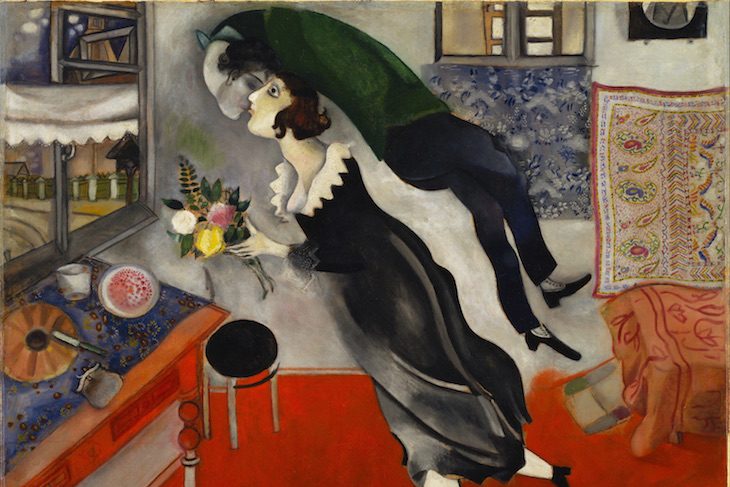
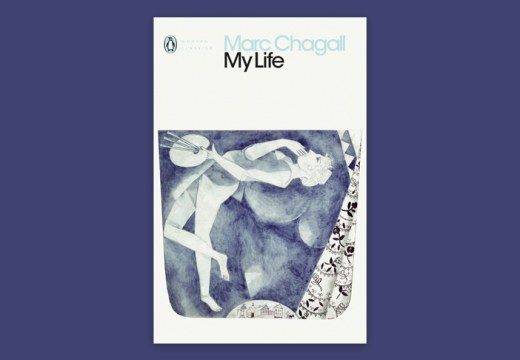
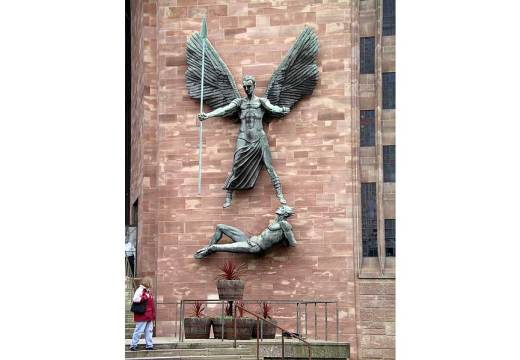
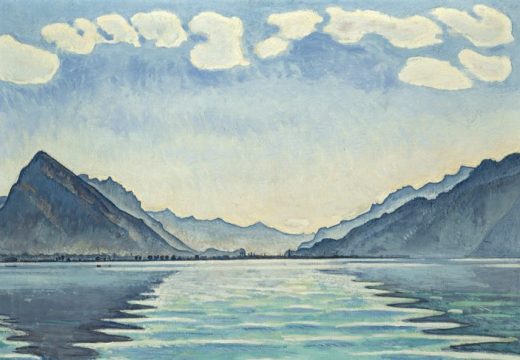









![Masterpiece [Re]discovery 2022. Photo: Ben Fisher Photography, courtesy of Masterpiece London](http://www.apollo-magazine.com/wp-content/uploads/2022/07/MPL2022_4263.jpg)
It’s time for the government of London to return to its rightful home